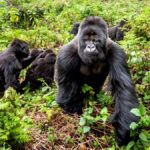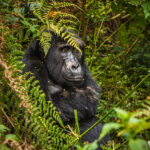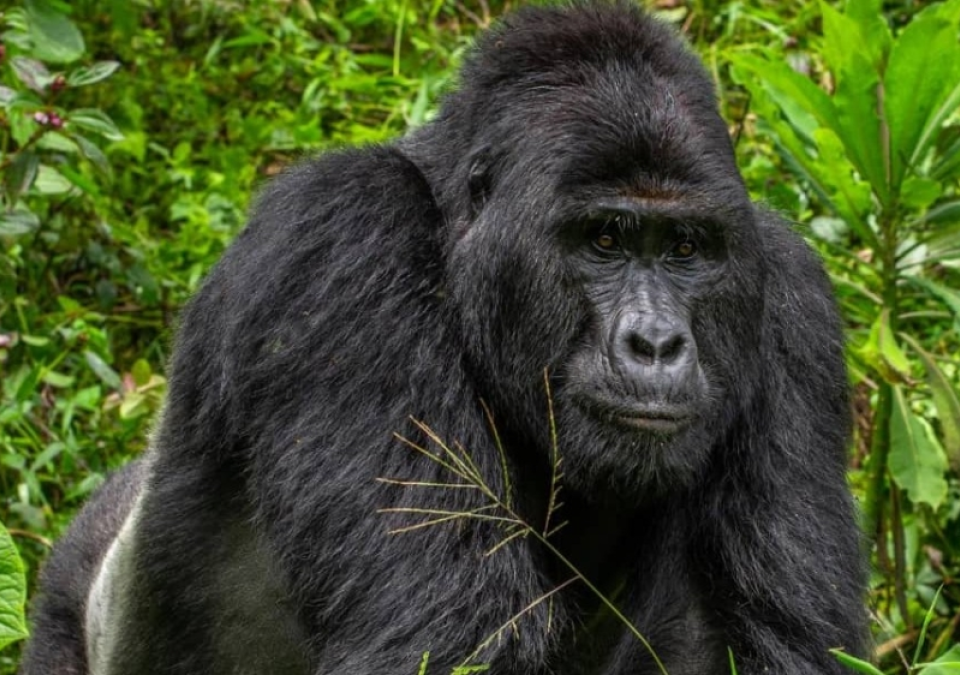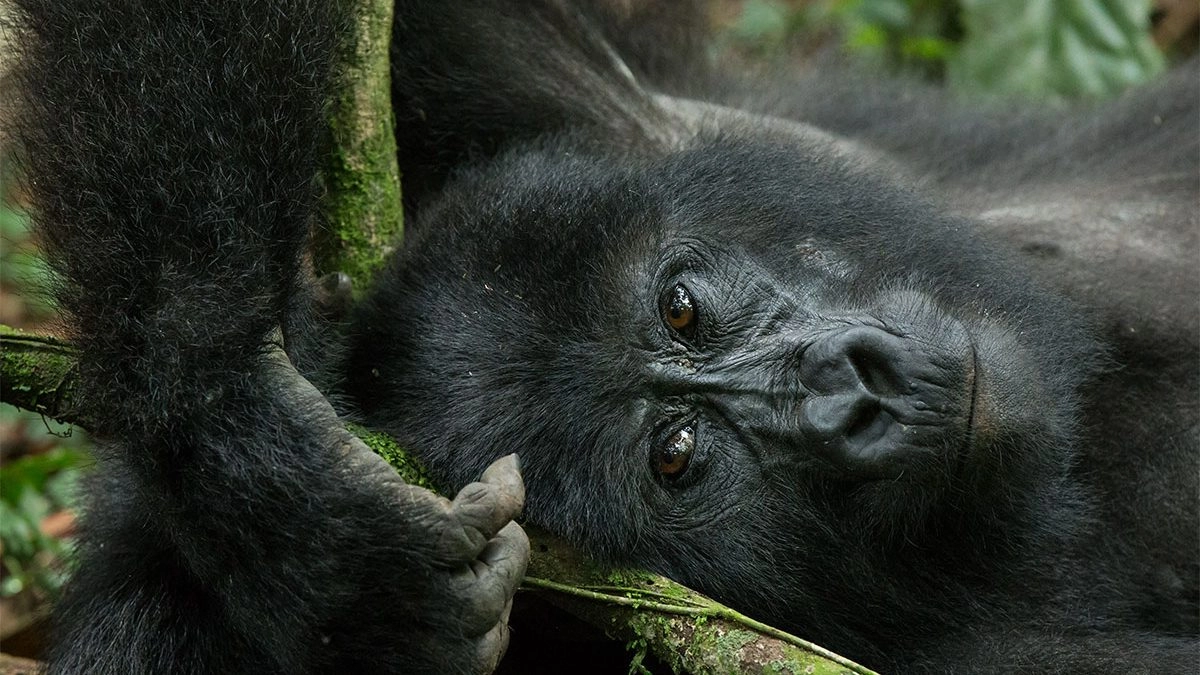
Best Camera for Gorilla Trekking
August 23, 2025
Uganda Gorilla Trekking from Vietnam
August 25, 20255 Essential Tips for Photographing Mountain Gorillas – Uganda Gorilla Photo Safari
A Uganda Gorilla Trekking Photo Safari offers one of the most extraordinary wildlife photography experiences on the planet. Mountain gorillas are among the rarest and most expressive primates, with facial expressions and social behaviors that create powerful, emotional imagery. Capturing these moments requires careful preparation, specialized techniques, and an understanding of both the forest environment and gorilla behavior.
Ovacado Adventures, a recognized authority in Africa wildlife photography, offers expertly guided Gorilla Photography Safaris that combine immersive trekking with professional photographic instruction. These tours take photographers into Bwindi Impenetrable Forest, Mgahinga Gorilla National Park, and surrounding regions where habituated gorilla families reside. Travelers spend up to one hour observing gorillas during standard permits or up to four hours on Gorilla Habituation Experiences, maximizing opportunities to create compelling images. Beyond the gorillas, these safaris provide scenic landscapes, cultural encounters near the lodge, and tailored guidance to refine photography skills, positioning participants to produce gallery-worthy imagery.
This guide presents five essential tips for photographing mountain gorillas, covering lenses, camera settings, composition techniques, lighting, and storytelling through character. Following these guidelines ensures every Africa Gorilla Photography Tour becomes a professional, rewarding, and ethically responsible experience.
Tip 1 – Use a Fast Lens for Low-Light Environments
One of the most critical elements in Gorilla Photography Safaris is selecting the right lens. Dense forest environments reduce available light, making fast lenses with wide apertures essential. Lenses ranging from f/2.8 to f/4 allow photographers to maintain faster shutter speeds in low-light conditions, while simultaneously creating shallow depth-of-field for dramatic focus.
Shallow depth-of-field isolates the gorilla from its complex surroundings, guiding the viewer’s eye directly to the subject. In dense forests, this technique is especially effective, as the background foliage can distract from the central composition. For versatility, a 70–200mm f/2.8 lens works exceptionally well. Its focal length enables photographers to capture gorillas at 7–10 meters without disturbing them, while the wide aperture performs well under the forest canopy.
Using the right lens ensures crisp, professional-quality images, even when lighting is minimal. On Uganda Gorilla Trekking Photo Safaris, this lens becomes the primary tool, balancing flexibility with image quality. Additionally, combining it with a secondary wide-angle lens allows landscape and group environmental shots, providing a comprehensive photographic story of the gorillas’ habitat.
Tip 2 – Focus on the Eyes
In wildlife photography, eyes convey emotion, intelligence, and personality. This principle is critical during a Gorilla Photography Tour. Narrow depth-of-field lenses, such as f/2.8, make precise focusing crucial because even slight errors can result in the eyes falling out of focus. Using a single autofocus point over the gorilla’s eye ensures accuracy and produces images with maximum emotional impact.
Modern cameras often feature eye-tracking technology, which helps maintain focus on moving subjects. However, manual adjustment remains the most reliable method for precise framing. Gorilla Photography Safaris are not high-speed action shoots; the animals move slowly enough to allow careful composition, ensuring the eyes remain the focal point. Eye-focused portraits capture expressions of curiosity, tenderness, and strength, creating images that resonate deeply with viewers and elevate any Africa Gorilla Photo Safari portfolio.
Tip 3 – Embrace High ISO Settings
Even with a fast lens, forest conditions often require higher ISO settings. Mountain gorillas are dark subjects in dimly lit environments, which makes underexposure a risk if ISO is set too low. Using higher ISO allows faster shutter speeds, reducing motion blur and capturing sharp details of the gorillas’ fur, eyes, and facial expressions.
Photographers must balance ISO with noise management. Proper exposure at high ISO ensures grain remains minimal, and post-processing can further reduce noise without compromising detail. It is better to have a slightly grainy but sharp image than an underexposed or blurry one. For prints, grain often translates less noticeably, producing images suitable for exhibition or fine art displays. High ISO proficiency ensures every Africa Gorilla Photography Tour yields technically accurate, emotionally compelling images, even in challenging forest light.
Tip 4 – Photograph in the Shade
Unlike open savannah photography, mountain gorilla photography benefits from shade. Direct midday sunlight produces harsh highlights and deep shadows that obscure fur texture and diminish subtle expressions. Seeking shaded areas within the gorillas’ range creates soft, even lighting, emphasizing detail and tonal balance.
Shade provides consistent illumination for portraits and minimizes contrast issues, allowing both the gorilla’s coat and environment to be captured naturally. Although lower light requires camera adjustments, the resulting images are often more aesthetically pleasing than those in direct sun. Photographers should observe the group’s movements and anticipate moments when gorillas enter shaded patches. Mastering the use of shade is essential for any professional Gorilla Photography Safari, ensuring your images are detailed, intimate, and visually harmonious.
Tip 5 – Capture the Gorilla’s Character
Mountain gorillas are highly expressive and display a wide range of behaviors, from playful interactions to protective gestures. Capturing character distinguishes professional wildlife photography from ordinary snapshots. During a Gorilla Trekking Photo Safari, observe individual gorillas and identify behaviors that communicate personality, intelligence, or social hierarchy.
Focus on moments that reveal emotions—such as grooming, play, or maternal care—while framing compositions that emphasize these interactions. Ask yourself, “What story does this gorilla tell? How can I convey majesty, intelligence, and emotion in a single image?” Integrating environmental elements enhances storytelling, highlighting habitat alongside behavior. Capturing character elevates images beyond documentation, transforming them into evocative narratives suitable for gallery exhibitions or wildlife publications.
Camera Gear Preparation and Accessories
Success on a Uganda Gorilla Photography Safari relies on meticulous preparation. Essential accessories include extra memory cards, multiple charged batteries, lens cleaning cloths, and protective rain covers. Tripods are generally impractical on treks, but lightweight monopods stabilize shots effectively.
Selecting compact, durable camera bags ensures quick access to lenses while navigating rugged forest terrain. Carrying minimal but versatile equipment allows freedom of movement and reduces fatigue. Combining proper gear with the recommended lenses, ISO management, and eye-focused composition ensures every shot is optimized for quality and creativity during Africa Gorilla Photography Tours.
Cultural and Environmental Photography Opportunities
Beyond gorillas, Bwindi, Mgahinga, and surrounding areas provide rich photographic opportunities. Local Batwa communities offer music, dance, and craft-making sessions suitable for cultural photography. Asking for permission ensures ethical engagement and preserves the dignity of subjects.
Scenic landscapes, misty ridges, waterfalls, and terraced farms allow wide-angle shots that contextualize gorilla encounters. Early morning or late afternoon light enhances depth, color, and texture. Integrating wildlife, environment, and culture creates a holistic Uganda Gorilla Trekking Photo Safari portfolio that conveys a complete story of conservation, tradition, and natural beauty.
Why Ovacado Adventures Leads Gorilla Photography Tours
Ovacado Adventures combines decades of wildlife photography experience with intimate knowledge of gorilla habitats. The company specializes in guided Gorilla Photography Safaris, offering mentorship in composition, lighting, and ethical practices. Lodges are strategically located to provide comfort, accessibility, and proximity to habituated gorilla families.
Professional guides ensure safe, ethical encounters, while photographers receive practical instruction to capture gallery-quality images. With expertise spanning over 50 mountain gorilla treks, Ovacado Adventures enables participants to master Gorilla Trekking Photo Safari techniques, develop portfolios, and experience Africa’s wildlife responsibly.
Transforming Gorilla Encounters into Exceptional Photography
Mountain gorilla photography is both a technical and artistic endeavor. By using fast lenses, focusing on eyes, embracing high ISO, leveraging shaded environments, and capturing individual character, photographers produce compelling, professional images.
Ovacado Adventures ensures every Uganda Gorilla Trekking Photo Safari maximizes these opportunities while maintaining ethical standards and environmental respect. From gorilla portraits to forest landscapes and cultural documentation, each photograph tells a story of Africa’s wilderness.
For travelers asking, “How can I capture powerful images of mountain gorillas ethically and professionally?”, the answer is a well-planned, guided Africa Gorilla Photography Tour with Ovacado Adventures, where expertise meets opportunity in the heart of Uganda.




